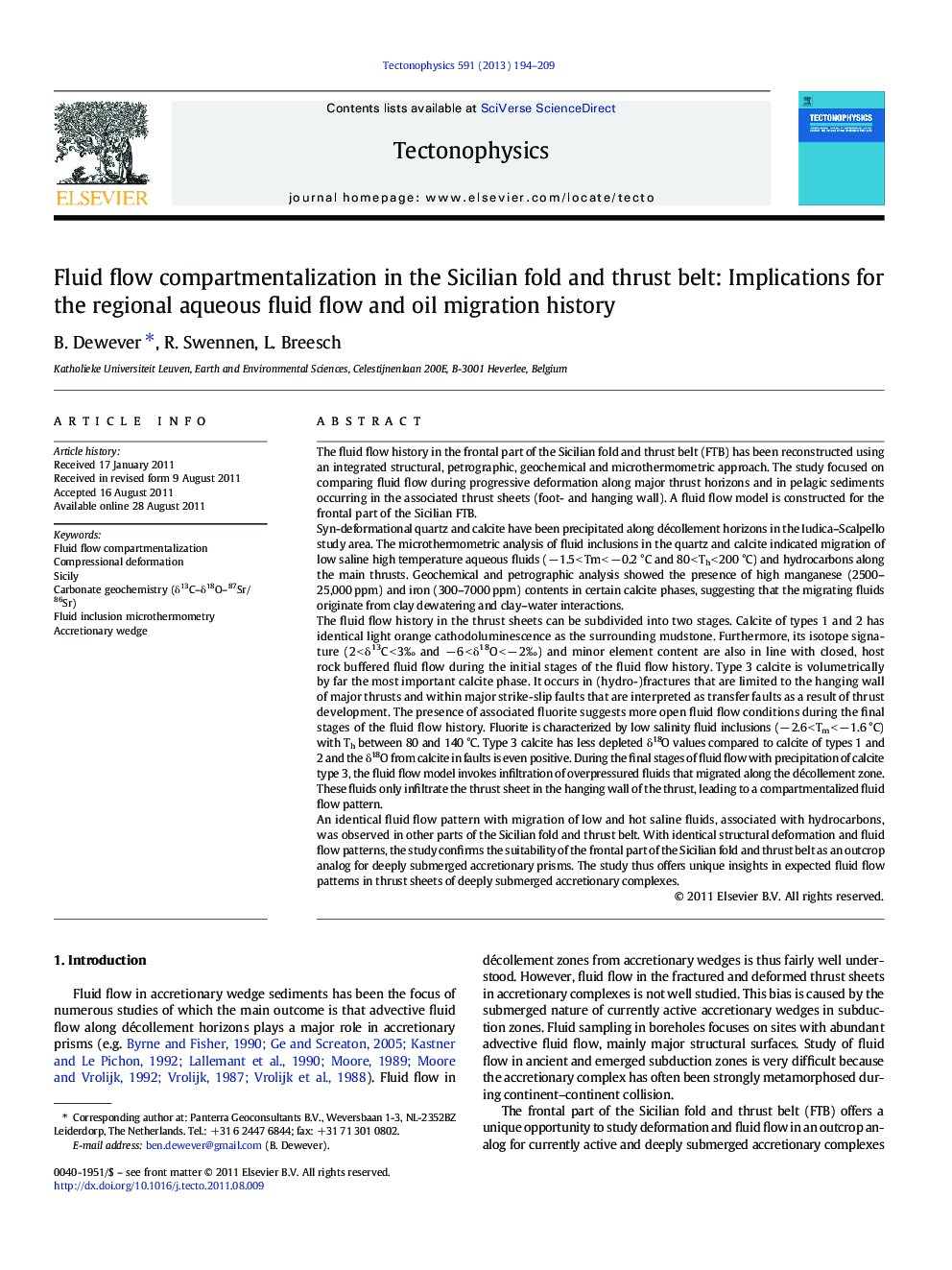| کد مقاله | کد نشریه | سال انتشار | مقاله انگلیسی | نسخه تمام متن |
|---|---|---|---|---|
| 4692425 | 1636794 | 2013 | 16 صفحه PDF | دانلود رایگان |
The fluid flow history in the frontal part of the Sicilian fold and thrust belt (FTB) has been reconstructed using an integrated structural, petrographic, geochemical and microthermometric approach. The study focused on comparing fluid flow during progressive deformation along major thrust horizons and in pelagic sediments occurring in the associated thrust sheets (foot- and hanging wall). A fluid flow model is constructed for the frontal part of the Sicilian FTB.Syn-deformational quartz and calcite have been precipitated along décollement horizons in the Iudica–Scalpello study area. The microthermometric analysis of fluid inclusions in the quartz and calcite indicated migration of low saline high temperature aqueous fluids (− 1.5 < Tm < − 0.2 °C and 80 < Th < 200 °C) and hydrocarbons along the main thrusts. Geochemical and petrographic analysis showed the presence of high manganese (2500–25,000 ppm) and iron (300–7000 ppm) contents in certain calcite phases, suggesting that the migrating fluids originate from clay dewatering and clay–water interactions.The fluid flow history in the thrust sheets can be subdivided into two stages. Calcite of types 1 and 2 has identical light orange cathodoluminescence as the surrounding mudstone. Furthermore, its isotope signature (2 < δ13C < 3‰ and − 6 < δ18O < − 2‰) and minor element content are also in line with closed, host rock buffered fluid flow during the initial stages of the fluid flow history. Type 3 calcite is volumetrically by far the most important calcite phase. It occurs in (hydro-)fractures that are limited to the hanging wall of major thrusts and within major strike-slip faults that are interpreted as transfer faults as a result of thrust development. The presence of associated fluorite suggests more open fluid flow conditions during the final stages of the fluid flow history. Fluorite is characterized by low salinity fluid inclusions (− 2.6 < Tm < − 1.6 °C) with Th between 80 and 140 °C. Type 3 calcite has less depleted δ18O values compared to calcite of types 1 and 2 and the δ18O from calcite in faults is even positive. During the final stages of fluid flow with precipitation of calcite type 3, the fluid flow model invokes infiltration of overpressured fluids that migrated along the décollement zone. These fluids only infiltrate the thrust sheet in the hanging wall of the thrust, leading to a compartmentalized fluid flow pattern.An identical fluid flow pattern with migration of low and hot saline fluids, associated with hydrocarbons, was observed in other parts of the Sicilian fold and thrust belt. With identical structural deformation and fluid flow patterns, the study confirms the suitability of the frontal part of the Sicilian fold and thrust belt as an outcrop analog for deeply submerged accretionary prisms. The study thus offers unique insights in expected fluid flow patterns in thrust sheets of deeply submerged accretionary complexes.
► Integration of field work, petrography, geochemistry and microthermometry in a regional fluid flow study.
► Compartmentalization of fluid flow in foot- and hanging wall of a major regional thrust.
► One of the first fluid flow studies in the Sicilian fold and thrust belt.
► The results of the study have implications for regional fluid flow patterns and oil migration history.
Journal: Tectonophysics - Volume 591, 8 April 2013, Pages 194–209
